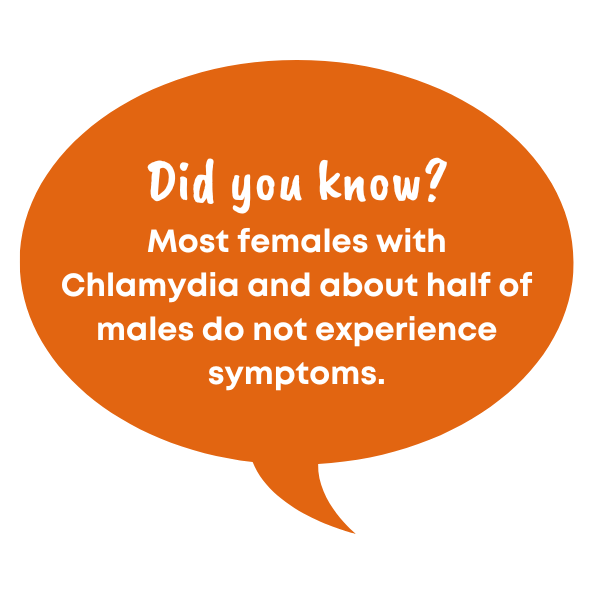Chlamydia Facts
Although in 2018, nearly 1.8 million cases of Chlamydia were reported to the CDC – it is estimated that almost 3 million cases actually occur each year. This page provides Chlamydia facts to keep you informed.
Chlamydia is a common and curable infection caused by the bacteria chlamydia trachomatis.
Chlamydia can be cured with antibiotic treatment, but if left untreated it can lead to complications such as PID and, potentially, infertility.
Chlamydia is most common in younger people. It is estimated that 1 in 20 sexually active people with a cervix aged 14-24 years has Chlamydia.
Chlamydia can also be passed to a newborn as the baby passes through the infected birth canal. This can result in eye infections, pneumonia or other complications.

What are the symptoms
It is important to understand that focusing on signs and symptoms is not very useful in determining if someone is infected with Chlamydia. First, the symptoms of Chlamydia are similar to the symptoms of Gonorrhea, and the two infections are often confused. Also, most women and about half of men do not experience symptoms. So, most people who are infected will not be able to tell from symptoms.
If a person does have symptoms, they may include:
Proctitis (inflamed rectum), urethritis (inflamed urethra) and conjunctivitis (inflamed eyelid)
Soreness and redness in the throat or mouth (for Chlamydia infection of the throat
vaginal discharge
pus (thick yellow-white fluid) or watery or milky discharge from the penis
pain or swelling of the testicle
If the infection spreads to the fallopian tubes, symptoms may include:
lower abdominal and lower back pain
pain during intercourse
bleeding between menstrual periods
nausea or fever
How can I protect myself
While the only way to completely avoid STIs is to not have vaginal, anal, or oral sex, there are still many ways to protect yourself.
Because Chlamydia is very common and often has no symptoms, anyone who is sexually active should think about being tested. Anyone who is sexually active should talk with a healthcare provider about whether they need testing for Chlamydia or other STIs. Don’t be afraid to speak openly about your sex life, as you can get the best care by having an honest discussion with your healthcare provider.
Tell me more about testing and treatment
There are several different reliable tests for Chlamydia. Newer tests, called NAATs (short for nucleic acid amplification tests), are very accurate and easy to take. Your healthcare provider can explain what testing options are available (urine or swab tests, for example). If you are pregnant, you should receive testing for chlamydia at your first prenatal visit.
People infected with Chlamydia are often also infected with Gonorrhea, so patients with Chlamydia are often treated for Gonorrhea at the same time, since the cost of treatment is generally less than the cost of testing.
There are antibiotic treatments that are effective in treating Chlamydia. A healthcare provider will decide which antibiotic is prescribed, taking into consideration the particular needs of the patient.
Chlamydia can be treated and cured easily, but that doesn’t mean that Chlamydia infection isn’t potentially dangerous. If Chlamydia isn’t diagnosed and left untreated, it can cause serious complications.

Learn more STI facts and news on the CDC website.
